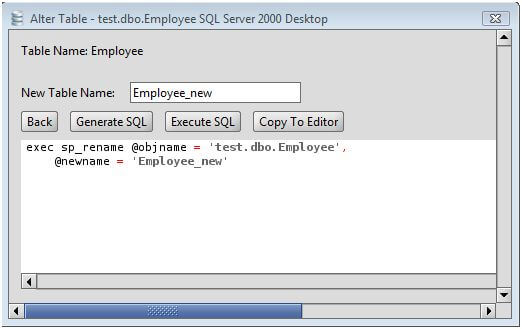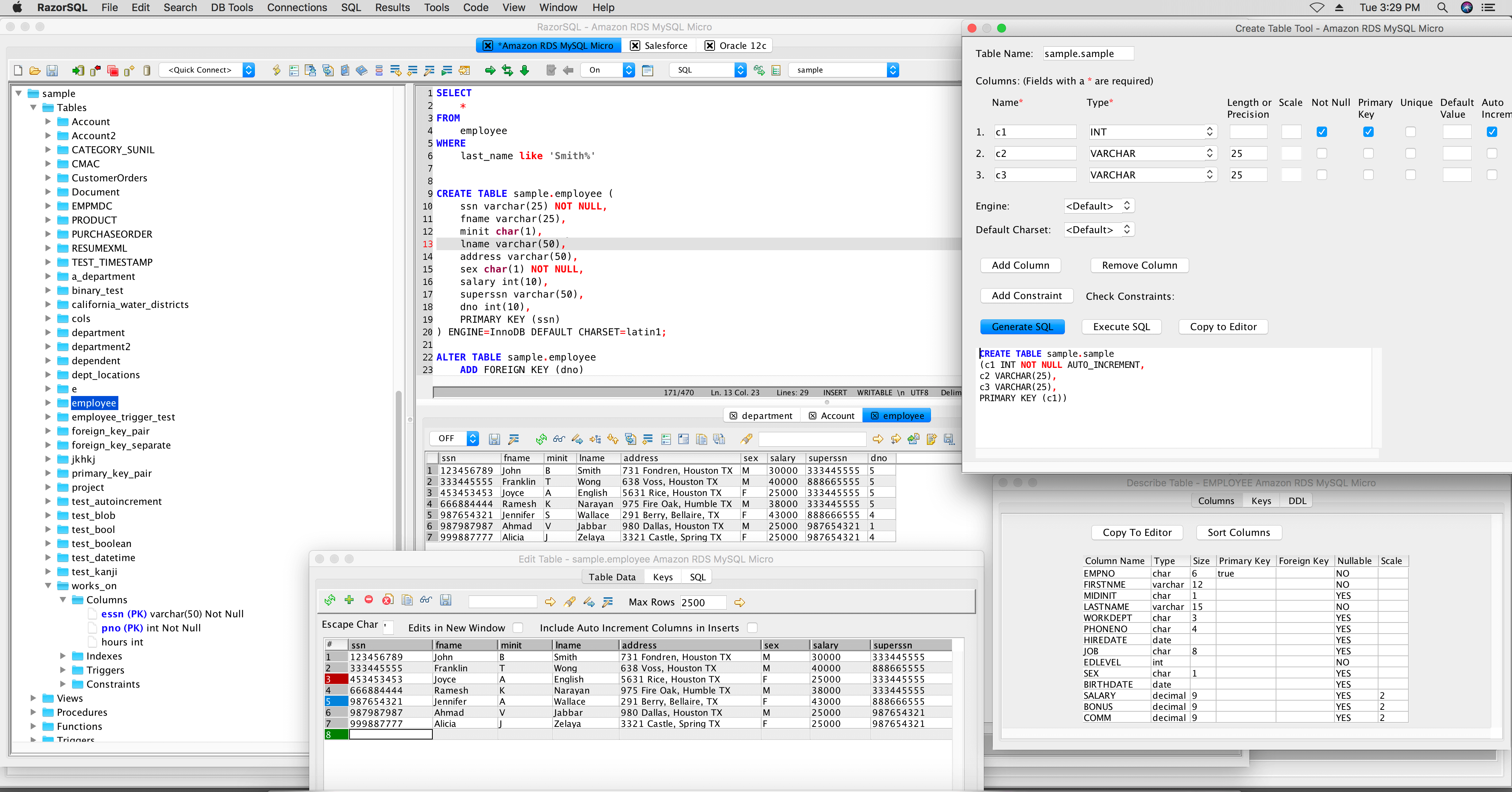Here I’ll show you how to get SQL Server up and running on your Mac in less than half an hour. And the best part is, you’ll have SQL Server running locally without needing any virtualization software.
Prior to SQL Server 2017, if you wanted to run SQL Server on your Mac, you first had to create a virtual machine (using VirtualBox, Parallels Desktop, VMware Fusion, or Bootcamp), then install Windows onto that VM, then finally SQL Server. This is still a valid option depending on your requirements (here’s how to install SQL Server on a Mac with VirtualBox if you’d like to try that method).
There was a brief period in 2009 when IBM provided a macOS implementation of Db2 Express-C v9.7 on Mac OS X, but many of the tools were not included and running a back-level version doesn't do much good over time. So, even when I could run a native Db2 server on my machine, I still ended up maintaining a Linux instance as well.
Starting with SQL Server 2017, you can now install SQL Server directly on to a Linux machine. And because macOS is Unix based (and Linux is Unix based), you can run SQL Server for Linux on your Mac. The way to do this is to run SQL Server on Docker.
So let’s go ahead and install Docker. Then we’ll download and install SQL Server.
Install Docker
Download the (free) Docker Community Edition for Mac (unless you’ve already got it installed on your system). This will enable you to run SQL Server from within a Docker container.
To download, visit the Docker CE for Mac download page and click Get Docker.
To install, double-click on the .dmg file and then drag the Docker.app icon to your Application folder.
What is Docker?
Docker is a platform that enables software to run in its own isolated environment. SQL Server (from 2017) can be run on Docker in its own isolated container. Once Docker is installed, you simply download — or “pull” — the SQL Server on Linux Docker Image to your Mac, then run it as a Docker container. This container is an isolated environment that contains everything SQL Server needs to run.
Launch Docker
Launch Docker the same way you’d launch any other application (eg, via the Applications folder, the Launchpad, etc).
When you open Docker, you might be prompted for your password so that Docker can install its networking components and links to the Docker apps. Go ahead and provide your password, as Docker needs this to run.
Increase the Memory (optional)
By default, Docker will have 2GB of memory allocated to it. SQL Server needs at least 2GB. However, it won’t hurt to increase it if you can.
In my case, I increased it to 4GB.
To do this, select Preferences from the little Docker icon in the top menu:
Then finish off by clicking Apply & Restart
Download SQL Server
Now that Docker is installed, we can download and install SQL Server for Linux.
Open a Terminal window and run the following command.
This downloads the latest SQL Server 2019 for Linux Docker image to your computer.
You can also check for the latest container version on the Docker website if you wish.
Launch the Docker Image
Run the following command to launch an instance of the Docker image you just downloaded:
But of course, use your own name and password. Also, if you downloaded a different Docker image, replace
mcr.microsoft.com/mssql/server:2019-latestwith the one you downloaded.Here’s an explanation of the parameters:
-dThis optional parameter launches the Docker container in daemon mode. This means that it runs in the background and doesn’t need its own Terminal window open. You can omit this parameter to have the container run in its own Terminal window. --name sql_server_demoAnother optional parameter. This parameter allows you to name the container. This can be handy when stopping and starting your container from the Terminal. -e 'ACCEPT_EULA=Y'The Yshows that you agree with the EULA (End User Licence Agreement). This is required in order to have SQL Server for Linux run on your Mac.-e 'SA_PASSWORD=reallyStrongPwd123'Required parameter that sets the sadatabase password.-p 1433:1433This maps the local port 1433 to port 1433 on the container. This is the default TCP port that SQL Server uses to listen for connections. mcr.microsoft.com/mssql/server:2019-latestThis tells Docker which image to use. If you downloaded a different one, use it instead. Password Strength
If you get the following error at this step, try again, but with a stronger password.
I received this error when using
reallyStrongPwdas the password (but of course, it’s not a really strong password!). I was able to overcome this by adding some numbers to the end. However, if it wasn’t just a demo I’d definitely make it stronger than a few dictionary words and numbers.Check the Docker container (optional)
You can type the following command to check that the Docker container is running.
If it’s up and running, it should return something like this:
Install sql-cli (unless already installed)
Run the following command to install the sql-cli command line tool. This tool allows you to run queries and other commands against your SQL Server instance.
This assumes you have NodeJs installed. If you don’t, download it from Nodejs.org first. Installing NodeJs will automatically install npm which is what we use in this command to install sql-cli.
Permissions Error?
If you get an error, and part of it reads something like
Please try running this command again as root/Administrator
, try again, but this time prependsudoto your command:Connect to SQL Server
Now that sql-cli is installed, we can start working with SQL Server via the Terminal window on our Mac.
Connect to SQL Server using the
mssqlcommand, followed by the username and password parameters.You should see something like this:
This means you’ve successfully connected to your instance of SQL Server.
Run a Quick Test
Run a quick test to check that SQL Server is up and running and you can query it.
For example, you can run the following command to see which version of SQL Server your running:
If it’s running, you should see something like this (but of course, this will depend on which version you’re running):
If you see a message like this, congratulations — SQL Server is now up and running on your Mac!
A SQL Server GUI for your Mac – Azure Data Studio
Azure Data Studio (formerly SQL Operations Studio) is a free GUI management tool that you can use to manage SQL Server on your Mac. You can use it to create and manage databases, write queries, backup and restore databases, and more.
Azure Data Studio is available on Windows, Mac and Linux.
- Where can DB2 Express-C run?. Windows. Windows workstation platforms (XP, Vista, Windows 7). Windows server platforms (2003, 2008). Linux. Red Hat, Suse, Ubuntu and more. Mac OS X (beta). Solaris. Windows. Windows workstation platforms (XP, Vista, Windows 7). Windows server platforms (2003, 2008). Linux. Red Hat, Suse, Ubuntu and more.
- Where can DB2 Express-C run? Windows. Windows workstation platforms(XP, Vista, Windows 7). Windows server platforms (2003,2008) Linux. Red Hat, Suse, Ubuntu and more Mac OS X(beta) Solaris Supported on 32-bit and 64-bit systems.
Here are some articles/tutorials I’ve written for Azure Data Studio:
Another Free SQL Server GUI – DBeaver
Another SQL Server GUI tool that you can use on your Mac (and Windows/Linux/Solaris) is DBeaver.
DBeaver is a free, open source database management tool that can be used on most database management systems (such as MySQL, PostgreSQL, MariaDB, SQLite, Oracle, DB2, SQL Server, Sybase, Microsoft Access, Teradata, Firebird, Derby, and more).
I wrote a little introduction to DBeaver, or you can go straight to the DBeaver download page and try it out with your new SQL Server installation.
Limitations of SQL Server for Linux/Mac
SQL Server for Linux does have some limitations when compared to the Windows editions (although this could change over time). The Linux release doesn’t include many of the extra services that are available in the Windows release, such as Analysis Services, Reporting Services, etc. Here’s a list of what’s available and what’s not on SQL Server 2017 for Linux and here’s Microsoft’s list of Editions and supported features of SQL Server 2019 on Linux.
Another limitation is that SQL Server Management Studio is not available on Mac or Linux. SSMS a full-blown GUI management for SQL Server, and it provides many more features than Azure Data Studio and DBeaver (at least at the time of writing). You can still use SSMS on a Windows machine to connect to SQL Server on a Linux or Mac machine, but you just can’t install it locally on the Linux or Mac machine.
If you need any of the features not supported in SQL Server for Linux, you’ll need SQL Server for Windows. However, you can still run SQL Server for Windows on your Mac by using virtualization software. Here’s how to install SQL Server for Windows on a Mac using VirtualBox.
The OpenLink ODBC Driver for DB2 (Express Edition) isdistributed as a Disk image (DMG) file. Simply double click on thedisk image 'mul6edb2.dmg' to extract the installer mpkg file:
Figure 3.1. InstallerA_DB2.png
Double click on the mpkg file to run the installer and followingthe on screen instruction as indicated below to complete theinstallation:
Figure 3.2. InstallerB_DB2.png
Installer Welcome Dialog for the OpenLink ODBC Driver for DB2(Express Edition):
Figure 3.3. Installer1_DB2.png
Please review the readme file for installation requirements andknown issues:
Figure 3.4. Installer2_DB2.png

Please read the software license agreement before continuingyour installation:
Figure 3.5. Installer3_DB2.png
Select destination volume for driver installation:

Figure 3.6. Installer5_DB2.png
Choose to perform a custom or default installation of thedriver:
Figure 3.7. Installer6_DB2.png
If you chose the custom option select which of the componentsbelow are to be installed:
Figure 3.8. InstallerC_DB2.png
The software must be installed as a user with administrativeprivileges on the machine:
Figure 3.9. Installer7_DB2.png
After the driver has been installed you will be prompted for alicense file. If a license file already exists on the machine thenselect the 'use exisiting file' option. A trial (try) or full (buy)license can be obtain by selecting the 'try and buy' option whichloads our online try and buy web page:
Figure 3.10. Installer8_DB2.png
To obtain the trial license you must be a registered user on theOpenLink Web site and login with the username (e-mail address) andpassword for that user. Click on the 'Shop' link to visit ouronline shop cart to purchases a full license if required:

Db2 Express-c Database Server For Mac Os X 10.10
Figure 3.11. InstallerD_DB2.png
Click on the 'download license' button to obtain the licensefile immediately and save to your desktop. Alternatively an autoe-mail will be sent to the registered users e-mail address with alink to their OpenLink Data Space (ODS) where all trial and fulllicense files will be stored in the Briefcase for download at alater date.
Figure 3.12. InstallerE_DB2.png
Db2 Express-c Database Server For Mac Os X64
Select the license file to be used for the installation:
Figure 3.13. Installer10_DB2.png
Installation is complete:
Figure 3.14. Installer11_DB2.png